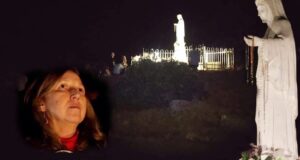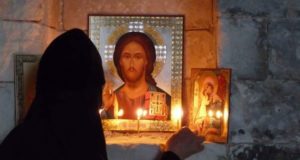🌷♰🌷
📌 الحل يبدأ بالاعتراف بتسلل العدو إلى قلب الكنيسة بشكل منظم وسيطرته على وظائف رئيسة
📌 الكاثوليك لا يعبدون مجمعًا ، لا الفاتيكان الثاني ولا ترينت ، بل بالأحرى الثالوث الأقدس
📌 قوى معادية قوية ومنظّمة رفضت المخططات التحضيرية الأرثوذكسية الكاتوليكية المثالية التي أعدها الكرادلة والأساقفة بإخلاص واستبدلوها بمجموعة من الأخطاء المقنعة بذكاء وراء كلمات طويلة ملتبسة ومراوغة عن عمد.
📌 بعد إنكار القديس بطرس الثلاثي للمسيح أثناء محاكمة المسيح ، بكى بمرارة، وكان لديه أخاديد على خديه نتيجة الدموع التي ذرفها بغزارة.. سيكون على أحد خلفائه ، نائب المسيح ، في ملء قوته الرسولية ، أن ينضم إلى خيط هذا التقليد.. لن تكون هذه هزيمة بل فعل وقوف الى جانب الحق وفعل تواضع شجاع.
قال رئيس الأساقفة فيغانو لموقع CatholicCulture.org؛ (26 يونيو/حزيران) إنه على عكس المجامع السابقة أطلق الفاتيكان الثاني على نفسه لقب “رعوي” وأعلن أنه لا يريد تعريف أي مذهب .
وأضاف فيغانو أنه خلق فاصلاً كبيرًا “بين ما قبل وبعد” و “بين شرائع لا لبس فيها و حديث فارغ” و “بين ما هو ملعون و غمز العالم”.
كما نقل مجمع الفاتيكان الثاني “سلطة عقائدية مفترضة” و “عصمة تشريعية ضمنية“، على الرغم من أن هذا “تم استبعاده بوضوح” خلال جلسات المجمع.
وأضاف فيغانو إن آباء المجمع “خُدعوا” لأنه لم يكن بإمكان أي منهم أن يتخيل وجود قوى قوية ومعادية ومنظمة في الكنيسة، والتي استبدلت المخططات التحضيرية للمجمع “بمجموعة من الأخطاء المقنعة بذكاء وراء وخطب طويلة وغامضة عمداً”.
وكان هناك: “عقل خبيث منهجي لبعض آباء المجمع من ناحية، وتفاؤل ساذج أو إهمال لآباء المجمع ذوي النوايا الحسنة من جهة أخرى”.
ويرى فيغانو أن “روح المجمع” هي المجمع نفسه لأن “أخطاء فترة ما بعد المجمع كانت متضمنة في نصوص قوانين المجمع”.
وبناء على ذلك، فمن الصحيح أن يقول فيغانو إن الطقس الجديد (1970) هو قداس المجمع (1962-1965).
ويعتقد أن “الحل” – أو بالأحرى تشخيص- يكمن في “الاعتراف بتسلل العدو إلى قلب الكنيسة، واحتلاله الممنهج للمناصب الرئيسة في الكوريا الرومانية، والمعاهد والمدارس الكنسية، وتآمر مجموعة من المتمردين – بما في ذلك، من هم في الخط الأمامي..”.
واعترف فيغانو أيضًا “بعدم كفاية رد فاعلي الخير، وسذاجة الكثيرين، وخوف الآخرين، ومصالح أولئك الذين استفادوا بفضل تلك المؤامرة”.
ويأمل أن ينضم البابا المستقبلي “إلى صف التقليد هناك حيث انقطع” – ويتساءل المرء كيف يمكن أن يظهر مثل هذا البابا من كلية الكرادلة الحالية.
🌷♰🌷
واليكم مختصر مقابلة المطران كارلو ماريا فيجانو.. وتعليق مؤسس أخبار العالم الكاثوليكية، ومدير الأخبار والمحلل الرئيسي في CatholicCulture.org.
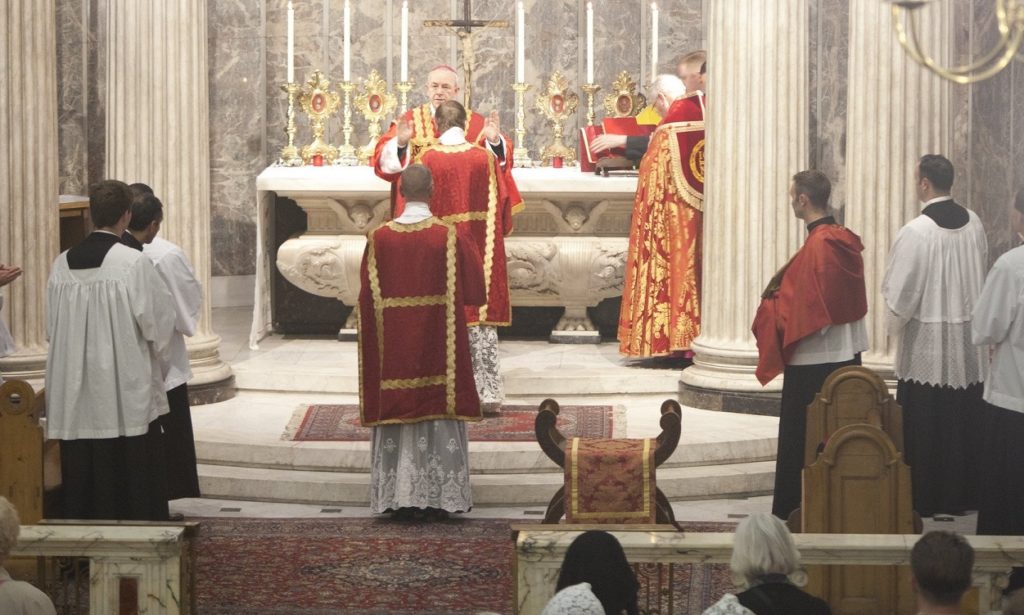
سؤال Phil Lawler : ماذا تقول عن الفاتيكان الثاني؟ من المؤكد أن الأمور سارت على منحدر سريع منذ ذلك الحين. ولكن إذا كان المجلس بأكمله يمثل مشكلة ، فكيف حدث ذلك؟ كيف يمكننا التوفيق بين ذلك وبين ما نؤمن به حول عقيدة التعليم؟ كيف خدع كل آباء المجلس؟ حتى لو كانت بعض أجزاء المجلس فقط (مثل Nostra Aetate ، Dignitatis Humanae) إشكالية ، ما زلنا نواجه نفس الأسئلة. يقول الكثير منا منذ سنوات أن “روح الفاتيكان الثاني” خاطئة. هل تقول الآن أن هذه “الروح” الزائفة الليبرالية تعكس بدقة عمل المجلس؟
رئيس الأساقفة فيجانو: لا أعتقد أنه من الضروري إثبات أن المجلس يمثل مشكلة: الحقيقة البسيطة هي أننا نثير هذا السؤال حول الفاتيكان الثاني وليس حول ترينت أو الفاتيكان ، يبدو لي أن أؤكد حقيقة واضحة و معترف بها من قبل الجميع. في الواقع ، حتى أولئك الذين يدافعون عن المجلس بالسيوف المسحوبة يجدون أنفسهم يفعلون ذلك بعيدًا عن جميع المجالس المسكونية السابقة الأخرى ، والتي لم يُقال حتى أن أحدًا منها مجلس رعوي. ولاحظوا أنهم يسمونه “المجمع” بامتياز ، كما لو كان المجلس الوحيد في تاريخ الكنيسة بأكمله ، أو على الأقل اعتباره مجتمعاً وحيداً سواء بسبب صياغة مذهبه أو للسلطة من إدارتها. إنه مجلس ، اختلف عن كل ما سبقه ، أطلق على نفسه اسم المجلس الرعوي ، معلناً أنه لا يريد اقتراح أي عقيدة جديدة ، ولكنه في الواقع خلق تمييزًا بين قبل وبعد ، بين مجلس عقائدي و المجلس الرعوي ، بين شرائع لا لبس فيها وكلام فارغ ، بين ما هو ملعون والغمز في العالم.
بهذا المعنى ، أعتقد أن مشكلة عصمة المحكمة (الجحود التي ذكرتها هي من جودة الكتاب المقدس بشكل صحيح) لا تنشأ حتى ، لأن المشرع ، أي البابا الروماني الذي انعقد المجلس حوله ، أكد بشكل رسمي وواضح أنه لا يريد استخدام السلطة العقائدية التي كان يمكن أن يمارسها إذا أراد. أود أن أبدي ملاحظة مفادها أنه لا يوجد شيء أكثر رعوية مما هو مقترح عقائدي ، لأن ممارسة التعليم munus docendi في أعلى شكل لها تتزامن مع الأمر الذي أعطاه الرب للقديس بطرس لإطعام خرافه وخرافه. ومع ذلك ، فإن هذه المعارضة بين العقائدية والرعوية قد تم إجراؤها بالتحديد من قبل الشخص الذي سعى ، في خطابه في افتتاح المجلس ، إلى إعطاء معنى شديد للعقيدة ومعنى أكثر ليونة وتصالحية للرعاية الرعوية. نجد أيضًا نفس الإعداد في تدخلات البابا بيرجوجليو ، حيث حدد “الرعوية [الرعوية]” كنسخة ناعمة من التدريس الكاثوليكي الجامد في مسائل الإيمان والأخلاق ، باسم التمييز. من المؤلم أن ندرك أن ممارسة اللجوء إلى معجم ملتبس ، باستخدام المصطلحات الكاثوليكية المفهومة بطريقة غير لائقة ، قد غزت الكنيسة بدءًا من الفاتيكان الثاني.. وهو استخدام مربك وغير الدقيق عمداً للغة. والتحديث Aggiornamento ، هو مصطلح في حد ذاته يروج له المجلس أيديولوجيًا باعتباره حوارًا مطلقًا ، يعقد حوارًا مع العالم ليكون أولويته قبل كل شيء.
هناك مراوغة أخرى يجب توضيحها. إذا أعلن البابوين يوحنا الثالث والعشرون وبولس السادس ، من جهة ، أنهما لا يرغبان في إلزام المجلس بتعريف المذاهب الجديدة ويريدان أن يقتصر على كونهما رعويين فقط ، فمن ناحية أخرى، صحيح أن ذلك خارجياً – طبياً أو في لوسائل الإعلام ، يمكننا القول اليوم – كان التركيز على أفعالها هائلاً. أدى هذا التأكيد إلى نقل فكرة السلطة العقائدية المفترضة ، عن العصمة القضائية الضمنية الضمنية ، على الرغم من أنه تم استبعادها بوضوح منذ البداية. إذا حدث هذا التأكيد ، كان من أجل السماح للحالات غير التقليدية إلى حد ما أن يُنظر إليها على أنها موثوقة وبالتالي يتم قبولها من قبل رجال الدين والمؤمنين. لكن هذا سيكون كافيًا لتشويه سمعة أولئك الذين قاموا بخداع مماثل ، والذين لا يزالون يبكون اليوم إذا لمس أي شخص Nostra Aetate ، بينما هم صامتون حتى إذا أنكر شخص ما ألوهية ربنا أو عذرية مريم الأكثر قدسية. دعونا نتذكر أن الكاثوليك لا يعبدون مجمعًا ، لا الفاتيكان الثاني ولا ترينت ، بل بالأحرى الثالوث الأقدس ، الإله الحقيقي الواحد ؛ إنهم لا يبجَّلون إعلانًا مجمعًا ، بل الحقيقة التي تنقلها هذه الأفعال من المدرسة.
تسألني: “كيف خدع كل آباء المجلس؟” أجيب بالاعتماد على تجربتي في تلك السنوات وكلمات إخواني الذين شاركت معهم في المناقشة في ذلك الوقت. لا يمكن لأحد أن يتخيل أنه في قلب الجسد الكنسي ، كانت هناك قوى معادية قوية ومنظّمة لدرجة أنها يمكن أن تنجح في رفض المخططات التحضيرية الأرثوذكسية المثالية التي أعدها الكرادلة والأساقفة بإخلاص موثوق به للكنيسة ، واستبدالها بمجموعة من الأخطاء المقنعة بذكاء وراء الكلمات الطويلة الملتبسة والمراوغة عن عمد. لا يمكن لأحد أن تصديق ، أنه يمكن اقرار تنازل الكنيسة الكاثوليكية وافتتاح الثورة. (كما ذكرت في مقال سابق ، أطلق الكاردينال سوينينس على الفاتيكان الثاني اسم “1789 للكنيسة”). كان آباء المجلس موضوع خداع مثير ، وخداع ارتكب بذكاء عن طريق اللجوء إلى أكثر الوسائل دقة: وجدوا أنفسهم في الأقلية في المجموعات اللغوية ، مستبعدين من الاجتماعات التي عقدت في اللحظة الأخيرة ، وضغطوا ليعتقدوا أن الأب الأقدس أراده. وما لم ينجح المبتكرون في الحصول عليه في القاعات”Conciliar Aula” ، حققوه في اللجان واللجان ، وذلك بفضل نشاط اللاهوتيين والخبراء الذين تم اعتمادهم وإشادة بهم من قبل آلة إعلامية قوية. هناك مجموعة واسعة من الدراسات والوثائق التي تشهد على هذه المنهجية [العقلانية] الخبيثة لبعض آباء المجلس من ناحية ، إضافة الى وجود تفاؤل ساذج أو إهمال من آباء المجلس الآخرين ذوي نوايا حسنة…
أولئك الذين أكدوا أن “روح المجلس” تمثل تفسيراً غير تقليدي أو خاطئ لتفسير الفاتيكان الثاني المنخرط في عملية ضارة ، حتى لو كانوا مدفوعين للقيام بذلك عن حسن نية. وهم راغبون في الدفاع عن شرف الكنيسة أمام المؤمنين والعالم ، وبالتالي كان يعتقد أن ما يُنسب إلى المجلس من تقدميين كان في الواقع غير ضروري. ولكن إذا كان من الصعب في ذلك الوقت التفكير في أن الحرية الدينية التي أدانها بيوس الحادي عشر (Mortalium Animos) يمكن تأكيدها من قبل Dignitatis Humanae ، أو أن البابا الروماني يمكن أن يرى سلطته مغتصبة من قبل كلية الأسقفية الوهمية ، فإننا نفهم اليوم أن ما تم إخفاؤه بذكاء في الفاتيكان الثاني اليوم مدوية في الوثائق البابوية على وجه التحديد باسم التطبيق المتماسك للمجلس.
من ناحية أخرى ، عندما نتحدث بشكل شائع عن روح الحداثة/العالم ، فإننا نعني على وجه التحديد أنه يشكل الروح ، جوهر ذلك الحدث. يمكننا بالتالي أن نؤكد أن روح المجلس هي المجلس نفسه ، وأن أخطاء فترة ما بعد التلاقي كانت متضمنة في نصوص في قوانين المجلس… ومرة أخرى: إذا كان الفاتيكان الثاني لا يمثل حقًا نقطة تمزق ، فما هو سبب الحديث عن كنيسة ما قبل التلاقي وكنيسة ما بعد التلاقي ، كما لو كانا كيانين مختلفين ، تم تحديدهما في جوهرهما من قبل المجلس نفسه ؟؟؟ وإذا كان المجلس متماشيًا حقًا مع كنيسة الكنيسة المعصومة بلا انقطاع ، فلماذا هو المجلس الوحيد الذي يطرح مشاكل جسيمة وخطيرة في التفسير ، ويظهر عدم تجانسه الوجودي فيما يتعلق بالمجالس الأخرى؟
س: ثانيًا ، ما الحل؟ يقترح الأسقف شنايدر أنه يجب على الحبر الأعظم أن ينكر الأخطاء. ويجد الأسقف فيغانو أن ذلك غير كاف. ولكن كيف يمكن تصحيح الأخطاء بطريقة تحافظ على سلطة هيئة التدريس؟
رئيس الأساقفة فيغانو: الحل ، في رأيي ، يكمن قبل كل شيء في فعل تواضع يجب علينا جميعاً ، بدءاً بالتسلسل الهرمي والبابا ، القيام به: الاعتراف بتسلل العدو إلى قلب الكنيسة ، واحتلاله مناصب رئيسية في الكوريا الرومانية والمعاهد والمدارس الكنسية ، مؤامرة مجموعة من المتمردين – بما في ذلك ، في الخط الأمامي . يجب علينا أيضًا أن ندرك وجود ضعف للوقوف الى جانب الحق، وسذاجة وخوف لدى آخرين إضافة الى نشوء مصالح من مستفيدين بفضل تلك المؤامرة. بعد إنكار القديس بطرس الثلاثي للمسيح أثناء محاكمة المسيح ، بكى بمرارة. ويخبرنا التقليد والإنجيل أن صخرة الرسل كان لديه أخاديد على خديه لبقية أيام ، نتيجة للدموع التي ذرفها بغزارة ، وتوبة من بعد خيانة. سيكون على أحد خلفائه ، نائب المسيح ، في ملء قوته الرسولية ، أن ينضم إلى خيط هذا التقليد.. لن تكون هذه هزيمة بل فعل وقوف الى جانب الحق وفعل تواضع شجاع. إن سلطة وخليفة صخرة الرسل ستظهر سليمة…
أود أن أذكر أنه بالنسبة لبعض الناس ، قد يبدو ما تم التعبير عنه أعلاه مفرطًا ، لأنه يبدو أنه يشكك في سلطة الكنيسة والبابا الرومان. ومع ذلك ، لم يعرقل أي انتهاك للخرق المؤقت لـ Saint Quius V’s Bull Quo ، وإلغاء القداس الروماني بأكمله من يوم إلى آخر ، الكنز الألفي الموقر لعقيدة وروحانية القداس التقليدي ، الإرث الهائل للنشيد الغريغوري و الموسيقى المقدسة ، جمال الطقوس والأثواب المقدسة ، تشويه الانسجام المعماري حتى في أكثر الكاتدرائية تميزًا ، إزالة الدرابزينات ، المذابح الضخمة ، والخيام: تم التضحية بكل شيء على مذبح التجديد المتناغم للكورام بوبولو (الناس)، مع الظروف المشددة في القيام به ذلك فقط لأن تلك الليتورجية كانت كاثوليكية رائعة ولا يمكن التوفيق بينها وبين روح الفاتيكان الثاني.
الكنيسة مؤسسة إلهية ، وكل شيء فيها يجب أن يبدأ بالله ويعود إليه. ما هو على المحك ليس هيبة الطبقة الحاكمة ، ولا صورة شركة أو حزب: ما نتعامل معه هنا هو مجد جلالة الله ، وعدم إبطال آلام ربنا على الصليب ، من آلام أمه الأقدس ، ودماء الشهداء ، وشهادة القديسين ، والخلاص الأبدي للأرواح. إذا كنا بدافع الكبرياء أو العناد المؤسف لا نعرف كيف ندرك الخطأ والخداع اللذين وقعنا فيهما ، فسنضطر إلى تقديم حساب إلى الله ، فهو رحوم للتائبين، وعادل للذين يتبعون إبليس في خدمته.
🌷♰🌷
تحدي الأسقف فيغانو للفاتيكان الثاني بقلم فيل لولر | 26 يونيو 2020
[فيما يلي تأملاتي حول كلام رئيس الأساقفة فيغانو ، قدمه رداً على أسئلة طرحتها حول آرائه بشأن سلطة الفاتيكان الثاني].
في أوائل يونيو ، حصل المطران كارلو ماريا فيجانو – الذي لفت الانتباه الدولي في أغسطس 2018 ، عندما اتهم مسؤولي الفاتيكان بتغطية سوء السلوك الجنسي المفترس لثيودور ماكاريك – وكذلك بعناوين الصحف مرة أخرى ، بتوجيهه رسالة مفتوحة إلى الرئيس الأميريكي دونالد ترامب. وأشاد فيغانو بالرئيس ترامب لدفاعه عن الحياة البشرية، وشجعه على مقاومة جهود “الدولة العميقة“.
وقد أصبحت رسالة رئيس الأساقفة نفسها محور الجدل – خاصة عندما استدعى الرئيس ترامب (كما كان متوقعًا) دعم الأسقف في حسابه على تويتر.
لسوء الحظ ، فإن موجة الخطاب السياسي التي أعقبت الانتباه إلى بيان آخر أصدره رئيس الأساقفة فيجانو بعد بضعة أيام فقط. كان هذا البيان الثاني (في الواقع الأخير في ما أصبح سلسلة طويلة من التصريحات العلنية من السكرتير السابق) أكثر أهمية ، في رأيي ، لأنه يتعلق بالسلطة العقائدية للكنيسة الكاثوليكية.
كان تصريح المطران فيجانو الثاني في يونيو جريئاً بالتأكيد ، إن لم يكن نبويًا صريحًا. واجه فيها بشكل مباشر السؤال الغريب حول كيف أصبحت الكنيسة الجامعة مجزأة في أعقاب المجمع الفاتيكاني الثاني. لقد قدم حجج قوية مفادها أن كل من الكاثوليك الذين يبتهجون بالتغييرات التي حدثت في الكنيسة ، كما التقليديين الذين يرفضون هذه التغييرات ، نشأ عنهما اتفاق ضمني:
… أنه على الرغم من جميع جهود التأويل الاستمراري التي حطمت السفينة بشكل بائس في المواجهة الأولى مع واقع الأزمة الحالية ، لا يمكن إنكار أنه من الفاتيكان الثاني فصاعدًا تم بناء كنيسة موازية، متراكبة ومعارضة تمامًا للكنيسة الحقيقية السيد المسيح.
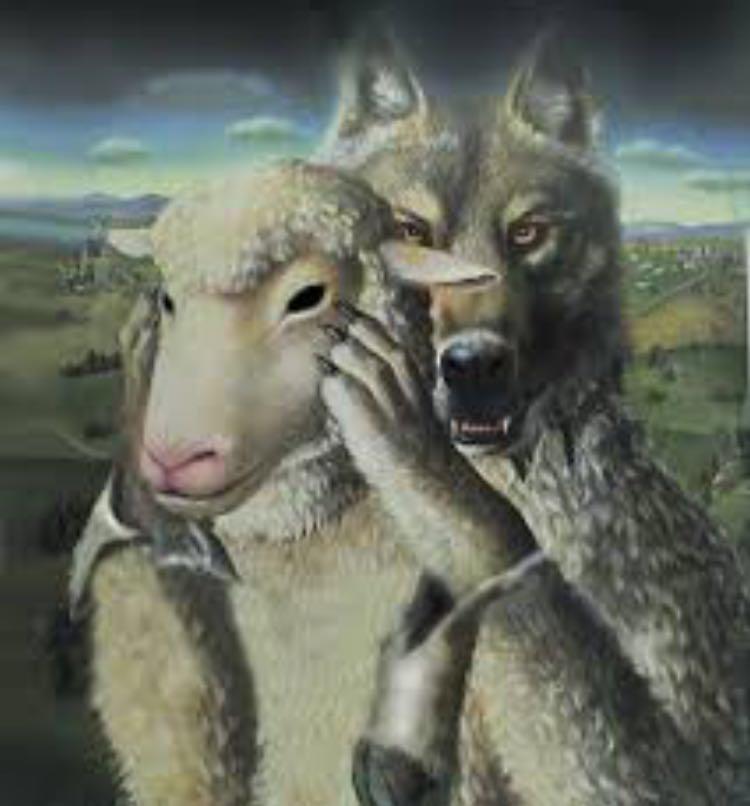
كان هنا تحديًا مباشرًا للفهم التقليدي للفاتيكان الثاني وما أعقبه. من جهتي ، رأيت تصريح رئيس الأساقفة على أنه دعوة للمناقشة والنقاش على نطاق أوسع. لذا اتصلت بالمطران فيجانو ، وطلبت منه الإجابة عما بدا لي من أهم الأسئلة حول موقفه. رد بسخاء ببيان جريء آخر يوضح ويوسع نطاق رسالته السابقة. أنا ممتن لرئيس الأساقفة فيغانو لرده ، ولإعطائنا طريقة جديدة للتفكير في المشاكل التي نشأت في الكنيسة منذ المجمع. مرة أخرى أشجع القراء بشدة على قراءة البيان الكامل للأسقف.
يؤكد بعض الكاثوليك أن المشاكل في الكنيسة اليوم تعود إلى الفاتيكان الثاني. من الصعب الحفاظ على هذه الحجة لسببين. الأول بالإشارة إلى أن الروح القدس ، الذي وعد ربنا بتوجيه كنيسته، كان غائبًا إلى حد ما عن المجمع. والثاني، باجتماع قادة كنيسة ظاهرياً لرسم مسارهم المستقبلي ، واتخاذ الأساقفة فجأة الطريق الخطأ.
من ناحية أخرى ، من الصعب أيضًا الحفاظ على الادعاء بأن المجلس كان بركة.. وأن المشاكل التي نشأت بعد ذلك يجب أن تأتي من مصدر آخر. ربما لم تتسبب تعاليم الفاتيكان الثاني مباشرة في صعوباتنا الحالية ، لكنها بالتأكيد لم تعالج المشاكل ، وفي هذه المرحلة فقط يمكن للمتفائل اليائس أن يدعي أن الفاتيكان الثاني جلب حياة جديدة ونشاطًا في الكنيسة.
ومع ذلك ، يرى بعض الكاثوليك “التقدميين” اليوم المجلس كمصدر لديناميكية جديدة في الكنيسة ، ويشيرون بقبول إلى تلك التطورات التي سببت انقسامات شديدة بين المؤمنين. وكما يلاحظ المطران فيجانو ، “يسمونه” المجلس “بامتياز ، كما لو كان المجلس الوحيد في تاريخ الكنيسة كله.” يمكنهم أن يفعلوا ويستشهدوا بوثائق المجلس – أو بشكل أكثر تكرارًا “روح الفاتيكان الثاني” غير المتبلورة – لتبرير التغييرات الجذرية.
لسنوات عديدة أصر كتاب الكنيسة الكاثوليكية – وأنا منهم – على أن “روح الفاتيكان الثاني” تتعارض مع التعاليم الفعلية للمجلس. لقد قبلنا بسعادة تعليمات البابا بنديكتوس السادس عشر بأنه يجب تطبيق “تأويل الاستمرارية” على بيانات المجلس. لكن هذا الموقف ، أيضًا ، أصبح من الصعب الحفاظ عليه ، حيث تنشأ المستجدات العقائدية ليس فقط في كتابات اللاهوتيين المنشقين ولكن في وثائق الفاتيكان الرسمية. يتساءل الأسقف فيجانو عن كيفية التوفيق بين بيان أبو ظبي والتقليد الدائم لتعليم الكنيسة. لقد أثرت نفس السؤال حول فرح الحب (Amoris Laetitiae).
هل تسببت تعاليم المجلس – أو على الأقل السماح – في كسر التقاليد؟ لم يعد من الممكن تجنب السؤال ، لأن الفاصل أصبح واضحًا بشكل متزايد.
يجيب الأسقف فيغانو على هذا السؤال من خلال ملاحظة أن الفاتيكان الثاني لم يؤسس أي عقيدة جديدة. تم عقده كمجلس رعوي. في الواقع ، يذكرنا ،
… البابا الروماني الذي انعقد المجلس حوله ، أكد بشكل رسمي وواضح أنه لا يريد استخدام السلطة العقائدية التي كان يمكن أن يمارسها إذا أراد..
يمكن أن يكون هذا الاختيار الذي قام به البابا يوحنا الثالث والعشرون بحد ذاته خطأ في الحكم الرعوي. يكتب الأسقف فيغانو:
أود أن أبدي ملاحظة مفادها أنه لا يوجد شيء أكثر رعوية مما هو مقترح عقائدي ، لأن ممارسة munus docendi في أعلى شكل لها تتزامن مع الأمر الذي أعطاه الرب للقديس بطرس لإطعام خرافه وخرافه.
على أي حال ، يقول رئيس الأساقفة ، من الخطأ أن يُنسب إلى الفاتيكان الثاني “سلطة عقائدية مفترضة ، … عصمة ضمنية قضائية ، على الرغم من أنه تم استبعادها بوضوح منذ البداية”.
خلال هذا المجلس الرعوي ، يواصل رئيس الأساقفة فيجانو ، قدم بعض معارضي التقليد الدائم “أخطاء مقنعة بذكاء وراء خطابات طويلة وملتبسة عمداً.”
وما لم ينجح المبتكرون في الحصول عليه في قاعات المصالحات Conciliar Aula ، حققوه في اللجان واللجان ، وذلك بفضل نشاط اللاهوتيين والخبراء الذين تم اعتمادهم وإشادة بهم من قبل آلة إعلامية قوية.
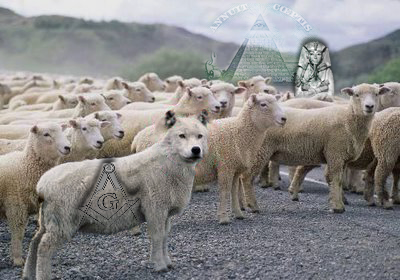
لذا فإن “روح الفاتيكان الثاني” اليوم – التي تعكس أو لا تعكس تعاليم المجلس ، ولكنها بالتأكيد ليست مستمرة مع العقيدة الكاثوليكية الدائمة – هي في صعود. لكن هذا الوضع لم يكن ليحدث لو لم يفشل المدافعون عن التقاليد الكاثوليكية في الإصرار على تعليم الكنيسة الأصيل. في كثير من الأحيان ، تجاهل الأسقفون الكاثوليك الأمناء الصعوبات ، وكشفوا عن الانقسامات الناشئة ، وغطوا أدلة الفساد – ضحوا بوضوح الحقائق الأبدية من أجل السلام المؤقت داخل الرتب.
لذلك يخلص رئيس الأساقفة فيغانو إلى أن الخطوة الأولى نحو الإصلاح الحقيقي هي الاعتراف الصادق بإخفاقاتنا الخاصة ، بدءًا بفشلنا في تحديد المشاكل والاستجابة بحماس إنجيلي مناسب.
الحل ، في رأيي ، يكمن قبل كل شيء في فعل تواضع يجب علينا جميعاً ، بدءاً بالتسلسل الهرمي والبابا ، القيام به: الاعتراف بتسلل العدو إلى قلب الكنيسة.
قبل عدة أشهر ، جادلت بأن تجديد الليتورجيا الكاثوليكية يجب أن يبدأ بموقف التوبة من جميع الإساءات التي تحملناها خلال العقود الأخيرة. يقدم رئيس الأساقفة فيغانو اقتراحا مماثلا ، يوسعه ليشمل تجديد العقيدة الكاثوليكية والتوجيه الرعوي. قد يجد بعض الكاثوليك أن هذه الآراء مقلقة. قد يصفها البعض بأنها متطرفة. لكن النقاش الصادق – وهو النقاش الذي يعترف بالانقسامات العميقة التي تحطم الكنيسة اليوم – قد طال انتظاره.

Interview with Phil Lawler
Lawler: First, what are you saying about Vatican II? That things have gone downhill fast since then is certainly true. But if the whole Council is a problem, how did that happen? How do we reconcile that with what we believe about the inerrancy of the magisterium? How were all the Council fathers deceived? Even if only some parts of the Council (e.g. Nostra Aetate, Dignitatis Humanae) are problematical, we still face the same questions. Many of us have been saying for years that the “spirit of Vatican II” is in error. Are you now saying that this phony liberal “spirit” does accurately reflect the work of the Council?
Archbishop Vigano: I do not think that it is necessary to demonstrate that the Council represents a problem: the simple fact that we are raising this question about Vatican II and not about Trent or Vatican I seems to me to confirm a fact that is obvious and recognized by everyone. In reality, even those who defend the Council with swords drawn find themselves doing so apart from all the other previous ecumenical councils, of which not even one was ever said to be a pastoral council. And note that they call it “the Council” par excellence, as if it was the one and only council in the entire history of the Church, or at least considering it as an unicum whether because of the formulation of its doctrine or for the authority of its magisterium. It is a council that, differently from all those that preceded it, called itself a pastoral council, declaring that it did not want to propose any new doctrine, but which in fact created a distinction between before and after, between a dogmatic council and a pastoral council, between unequivocal canons and empty talk, between anathema sit and winking at the world.
In this sense, I believe that the problem of the infallibility of the Magisterium (the inerrancy you mention is properly a quality of Sacred Scripture) does not even arise, because the Legislator, that is, the Roman Pontiff around whom the Council was convened, solemnly and clearly affirmed that he did not want to use the doctrinal authority which he could have exercised if he wanted. I would like to make the observation that nothing is more pastoral than what is proposed as dogmatic, because the exercise of the munus docendi in its highest form coincides with the order that the Lord gave to Peter to feed his sheep and lambs. And yet this opposition between dogmatic and pastoral was made precisely by the one who, in his discourse opening the Council, sought to give a severe meaning to dogma and a softer, more conciliatory meaning to pastoral care. We also find the same setting in the interventions of Bergoglio, where he identifies “pastoralism [pastoralità]” as a soft version of rigid Catholic teaching in matters of Faith and Morals, in the name of discernment. It is painful to recognize that the practice of having recourse to an equivocal lexicon, using Catholic terms understood in an improper way, invaded the Church starting with Vatican II, which is the first and most emblematic example of the so-called “circiterism,” the equivocating and intentionally imprecise use of the language. This happened because the Aggiornamento, a term in itself ideologically promoted by the Council as an absolute, held dialogue with the world to be its priority above all else.
There is another equivocation that must be clarified. If on the one hand John XXIII and Paul VI declared that they did not want to commit the Council to the definition of new doctrines and wanted it to limit itself to being only pastoral, on the other hand it is true that externally—mediatically or in the media, we would say today—the emphasis given to its acts was enormous. This emphasis served to convey the idea of a presumed doctrinal authority, of an implicit magisterial infallibility, even though these were clearly excluded right from the beginning. If this emphasis occurred, it was in order to allow the more or less heterodox instances to be perceived as authoritative and thus to be accepted by the clergy and the faithful. But this would be enough to discredit those authors of a similar deception, who still cry out today if anyone touches Nostra Aetate, while they are silent even if someone denies the divinity of Our Lord or the perpetual virginity of Mary Most Holy. Let us recall that Catholics do not worship a Council, neither Vatican II nor Trent, but rather the Most Holy Trinity, the One True God; they do not venerate a conciliar declaration or a post-synodal exhortation, but rather the Truth that these acts of the Magisterium convey.
You ask me: “How were all the Council fathers deceived?” I reply by drawing on my experience of those years and the words of my brothers with whom I engaged in discussion at that time. No one could have imagined that right in the heart of the ecclesial body there were hostile forces so powerful and organized that they could succeed in rejecting the perfectly orthodox preparatory schemas that had been prepared by Cardinals and Prelates with a reliable fidelity to the Church, replacing them with a bundle of cleverly disguised errors behind long-winded and deliberately equivocal speeches. No one could have believed that, right under the vaults of the Vatican Basilica, the estates-general could be convoked that would decree the abdication of the Catholic Church and the inauguration of the Revolution. (As I have already mentioned in a previous article, Cardinal Suenens called Vatican II “the 1789 of the Church”). The Council Fathers were the object of a sensational deception, of a fraud that was cleverly perpetrated by having recourse to the most subtle means: they found themselves in the minority in the linguistic groups, excluded from meetings convened at the last moment, pressured into giving their placet by making them believe that the Holy Father wanted it. And what the innovators did not succeed in obtaining in the Conciliar Aula, they achieved in the Commissions and Committees, thanks also to the activism of theologians and periti who were accredited and acclaimed by a powerful media machine. There is a vast array of studies and documents that testify to this systematic malicious mens [mentality] of some of the Council Fathers on the one hand, and the naïve optimism or carelessness of other well-intentioned Council Fathers on the other. The activity of the Coetus Internationalis Patrum [opposing the innovators] could do little or nothing, when the violations of the rules by the progressives were ratified at the Sacred Table itself [by the Pope].
Those who have maintained that the “spirit of the Council” represented a heterodox or erroneous interpretation of Vatican II engaged in an unnecessary and harmful operation, even if they were driven to do so in good faith. It is understandable that a Cardinal or Bishop would want to defend the honor of the Church and desire that she would not be discredited before the faithful and the world, and so it was thought that what the progressives attributed to the Council was in reality an undue misrepresentation, an arbitrary forcing. But if at the time it could be difficult to think that a religious liberty condemned by Pius XI (Mortalium Animos) could be affirmed by Dignitatis Humanae, or that the Roman Pontiff could see his authority usurped by a phantom episcopal college, today we understand that what was cleverly concealed in Vatican II is today affirmed ore rotundo in papal documents precisely in the name of the coherent application of the Council.
On the other hand, when we commonly speak of the spirit of an event, we mean precisely that it constitutes the soul, the essence of that event. We can thus affirm that the spirit of the Council is the Council itself, that the errors of the post-conciliar period were contained in nuce in the Conciliar Acts, just as it is rightly said that the Novus Ordo is the Mass of the Council, even if in the presence of the Council Fathers the Mass was celebrated that the progressives significantly call pre-conciliar. And again: if Vatican II truly did not represent a point of rupture, what is the reason for speaking of a pre-conciliar Church and a post-conciliar church, as if these were two different entities, defined in their essence by the Council itself? And if the Council was truly in line with the uninterrupted infallible Magisterium of the Church, why is it the only Council that poses grave and serious problems of interpretation, demonstrating its ontological heterogeneity with respect to other Councils?
Lawler: Second, what is the solution? Bishop Schneider proposes that a future Pontiff must repudiate errors; Archbishop Viganò finds that inadequate. But then how can the errors be corrected, in a way that maintains the authority of the teaching magisterium?
Archbishop Vigano: The solution, in my opinion, lies above all in an act of humility that all of us, beginning with the Hierarchy and the Pope, must carry out: recognizing the infiltration of the enemy into the heart of the Church, the systematic occupation of key posts in the Roman Curia, seminaries, and ecclesiastical schools, the conspiracy of a group of rebels—including, in the front line, the deviated Society of Jesus—which has succeeded in giving the appearance of legitimacy and legality to a subversive and revolutionary act. We should also recognize the inadequacy of the response of the good, the naivety of many, the fearfulness of others, and the interests of those who have benefited thanks to that conspiracy. After his triple denial of Christ in the courtyard of the high priest, Peter “flevit amare,” he wept bitterly. Tradition tells us that the Prince of the Apostles had two furrows on his cheeks for the rest of his days, as a result of the tears which he copiously shed, repenting of his betrayal. It will be for one of his Successors, the Vicar of Christ, in the fullness of his apostolic power, to rejoin the thread of Tradition there where it was cut off. This will not be a defeat but an act of truth, humility, and courage. The authority and infallibility of the Successor of the Prince of the Apostles will emerge intact and reconfirmed. In fact, they were not deliberately called into question at Vatican II, but ironically they would be on a future day in which a Pontiff would correct the errors that that Council permitted, playing jests with the equivocation of an authority it officially denied having but that the faithful were surreptitiously allowed to understand that it did have by the entire Hierarchy, beginning right with the Popes of the Council.
I wish to recall that for some people what is expressed above may sound excessive, because it would seem to call into question the authority of the Church and of the Roman Pontiffs. And yet, no scruple impeded the violation of Saint Pius V’s Bull Quo primum tempore, abolishing the entire Roman Liturgy from one day to the next, the venerable millenary treasure of the doctrine and spirituality of the traditional Mass, the immense patrimony of Gregorian chant and sacred music, the beauty of the rites and sacred vestments, disfiguring architectural harmony even in the most distinguished basilicas, removing balustrades, monumental altars, and tabernacles: everything was sacrificed on the conciliar renewal’s altar of coram populo, with the aggravating circumstance of having done it only because that Liturgy was admirably Catholic and irreconcilable with the spirit of Vatican II.
The Church is a divine institution, and everything in her ought to start with God and return to Him. What is at stake is not the prestige of a ruling class, nor the image of a company or a party: what we are dealing with here is the glory of the Majesty of God, of not nullifying the Passion of Our Lord on the Cross, of the sufferings of His Most Holy Mother, of the blood of the Martyrs, of the testimony of the Saints, of the eternal salvation of souls. If out of pride or unfortunate obstinacy we do not know how to recognize the error and deception into which we have fallen, we will have to give an account to God, who is as merciful with his people when they repent as he is implacable in justice when they follow Lucifer in his non serviam.
Dearest Doctor Lawler, to you and to your readers, I cordially send my greetings and the blessing of Our Lord, through the intercession of His and our Most Holy Mother.[Official translation by Giuseppe Pellegrino]
This item 12379 digitally provided courtesy of CatholicCulture.org
***
Archbishop Vigano’s challenge on Vatican II
[The following are my reflections on a new statement by Archbishop Vigano, which he made in response to questions that I had raised about his views on the authority of Vatican II.]
Early in June, Archbishop Carlo Maria Vigano—who had drawn international attention in August 2018, when he charged that Vatican officials including Pope Francis had covered up the predatory sexual misconduct of Theodore McCarrick—earned headlines once again, with an open letter to President Donald Trump. The former apostolic nuncio to the US praised President Trump for his defense of human life, and encouraged him to resist the efforts of the “deep state.”
Predictably, since it touched on a hot political debate, the archbishop’s letter itself became the focus of controversy—particularly when President Trump (again predictably) invoked the archbishop’s support on his Twitter account.
Unfortunately, the flurry of political rhetoric that ensued distracted attention from another statement released by Archbishop Vigano just a few days later. This second statement (actually the latest in what has become a long sequence of public statements from the former nuncio) was far more important, in my view, because it concerned the doctrinal authority of the Catholic Church.
Archbishop Vigano’s second June statement was certainly provocative, if not downright prophetic. In it he directly confronted the vexed question of how the universal Church has become fragmented in the wake of the Second Vatican Council. He made a strong case that both radical Catholics who rejoice in the changes that have been wrought in the Church, and traditionalists who reject those changes, there has arisen an implicit agreement:
… that despite all the efforts of the hermeneutic of continuity which shipwrecked miserably at the first confrontation with the reality of the present crisis, it is undeniable that from Vatican II onwards a parallel church was built, superimposed over and diametrically opposed to the true Church of Christ.
Here was a direct challenge to the conventional understanding of Vatican II and its aftermath. For my own part, I saw the archbishop’s statement as an invitation to broader discussion and debate. So I contacted Archbishop Vigano, and asked him to answer what seemed to me the most critical questions about his stand. He graciously responded with another provocative statement that clarifies and expands on his earlier message. I am grateful to Archbishop Vigano for his reply, and for giving us a new way to reflect on the problems that have arisen in the Church since the Council. Again I strongly encourage readers to read the archbishop’s full statement.
Some Catholics of traditionalist sympathies contend that the problems in the Church today had their origin in Vatican II. That argument is difficult to sustain for two reasons. First, it suggests that the Holy Spirit, whom our Lord promised to guide the teaching Magisterium, was somehow absent from the Council. Second, it fails to explain why, when the leaders of an ostensibly healthy Church gathered to plot their future course, those bishops suddenly took the wrong path.
On the other hand, it is also difficult to sustain the claim that the Council was an unmixed blessing, and the problems that have subsequently arisen must come from some other source. Maybe the teachings of Vatican II did not directly cause our current difficulties, but certainly they did not cure the problems, and at this point only a hopeless optimist can still claim that Vatican II brought new life and vigor into the Church.
Yet today some “progressive” Catholics do see the Council as the source of a new dynamism in the Church—and point with approval to precisely those developments that have caused severe divisions among the faithful. As Archbishop Vigano notes, “they call it ‘the Council’ par excellence, as if it was the one and only council in the entire history of the Church.” They can and do cite the documents of the Council—or, more frequently, an amorphous “spirit of Vatican II”—to justify radical changes.
For many years orthodox Catholic writers—myself included—have insisted that the “spirit of Vatican II” is at odds with the actual teachings of the Council. We have happily accepted the instruction of Pope Benedict XVI that a “hermeneutic of continuity” must be applied to the Council’s statements. But that position, too, has become difficult to sustain, as doctrinal novelties crop up not only in the writings of dissident theologians but in formal Vatican documents. Archbishop Vigano questions how the Abu Dhabi statement can be reconciled with the perennial tradition of Church teaching; I have raised the same question about Amoris Laetitiae.
Did the teachings of the Council cause—or at a minimum allow—a break with tradition? The question can no longer be avoided, because the break is increasingly apparent.
Archbishop Vigano answers that question by observing that Vatican II did not establish any new doctrine. It was convened as a pastoral council. In fact, he reminds us,
… the Roman Pontiff around whom the Council was convened, solemnly and clearly affirmed that he did not want to use the doctrinal authority which he could have exercised if he wanted.
That choice made by Pope John XXIII could itself have been an error of pastoral judgment. Archbishop Vigano writes:
I would like to make the observation that nothing is more pastoral than what is proposed as dogmatic, because the exercise of the munus docendi in its highest form coincides with the order that the Lord gave to Peter to feed his sheep and lambs.
In any case, the archbishop contends, it is a mistake to impute to Vatican II a “presumed doctrinal authority,… an implicit magisterial infallibility, even though these were clearly excluded right from the beginning.”
During this pastoral council, Archbishop Vigano continues, some opponents of the perennial tradition introduced “cleverly disguised errors behind long-winded and deliberately equivocal speeches.”
And what the innovators did not succeed in obtaining in the Conciliar Aula, they achieved in the Commissions and Committees, thanks also to the activism of theologians and periti who were accredited and acclaimed by a powerful media machine.
So today the “spirit of Vatican II”—which may or may not reflect the teaching of the Council, but is certainly not in continuity with perennial Catholic doctrine—is in the ascendant. But this situation could not have arisen if the defenders of Catholic tradition had not failed to insist on authentic Church teaching. Too often, orthodox Catholic prelates have ignored difficulties, papered over emerging divisions, and covered up evidence of corruption—sacrificing the clarity of eternal truths for the sake of temporary peace within the ranks.
Therefore Archbishop Vigano concludes that the first step toward true reform is an honest recognition of our own failures, beginning with our failure to identify the problems and respond with appropriate evangelical zeal.
The solution, in my opinion, lies above all in an act of humility that all of us, beginning with the Hierarchy and the Pope, must carry out: recognizing the infiltration of the enemy into the heart of the Church.
Several months ago I argued that a renewal of the Catholic liturgy must begin with an attitude of repentance for all the abuses we have tolerated over recent decades. Archbishop Vigano makes a similar suggestion, broadening it to encompass the renewal of Catholic doctrine and pastoral guidance. Some Catholics may find these views unsettling; some may label them as extreme. But an honest debate—one that acknowledges the profound divisions that wrack the Church today—is long overdue.

Phil Lawler has been a Catholic journalist for more than 30 years. He has edited several Catholic magazines and written eight books. Founder of Catholic World News, he is the news director and lead analyst at CatholicCulture.org. See full bio.
 Agoraleaks Agoraleaks
Agoraleaks Agoraleaks




